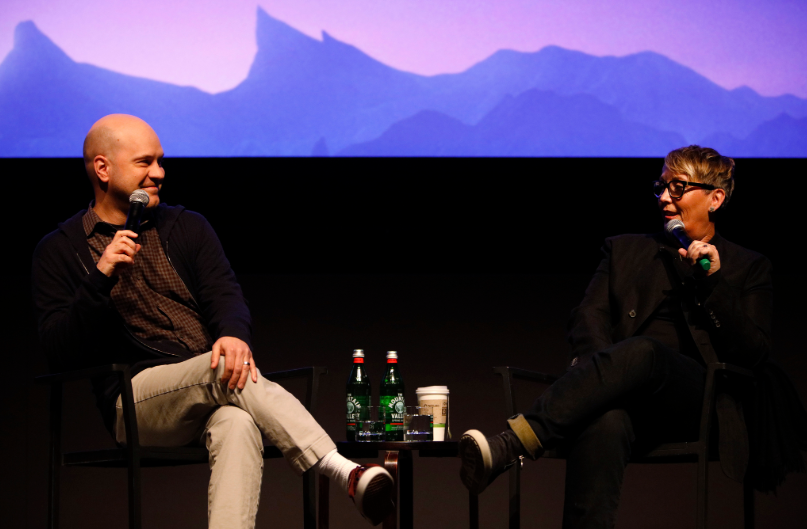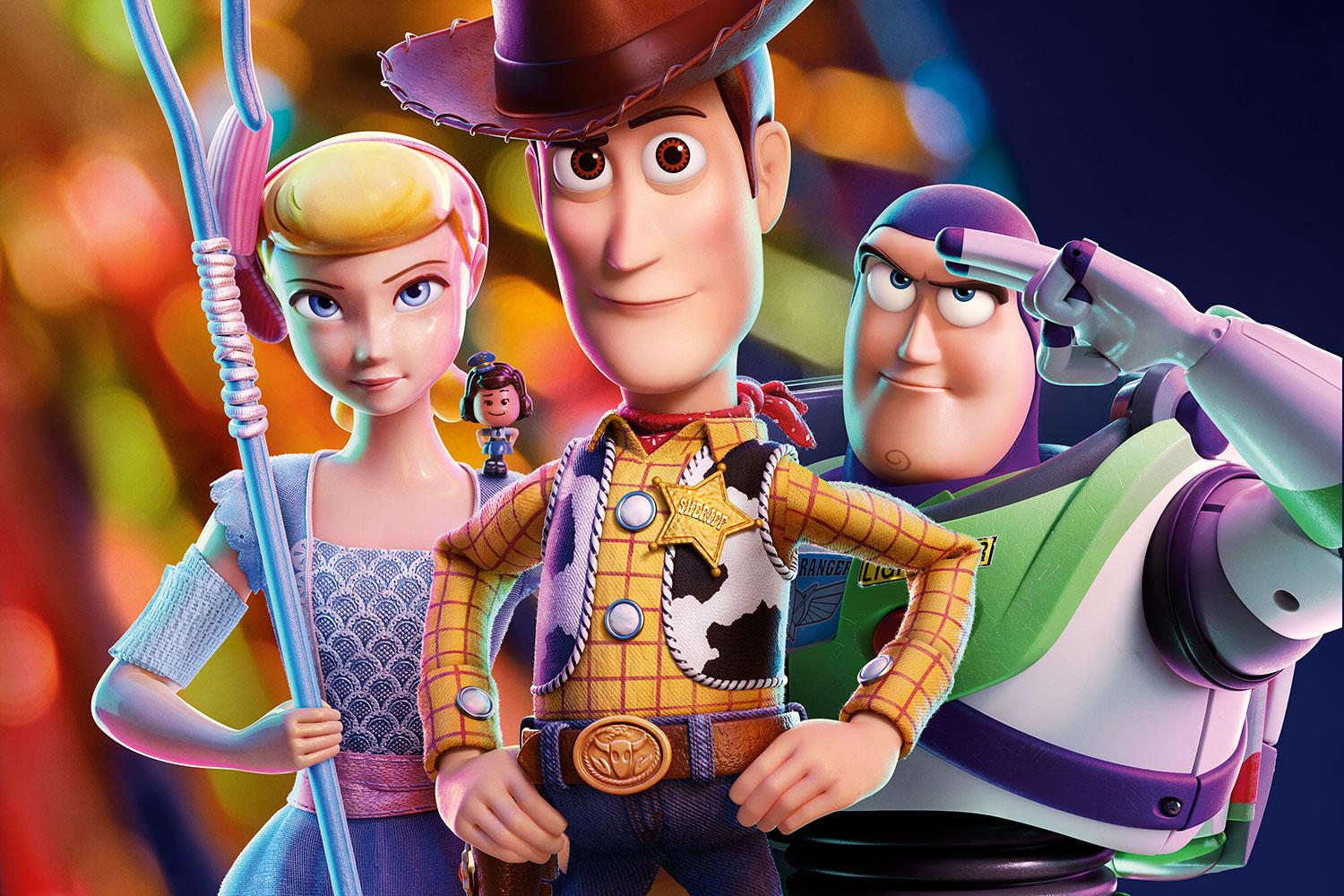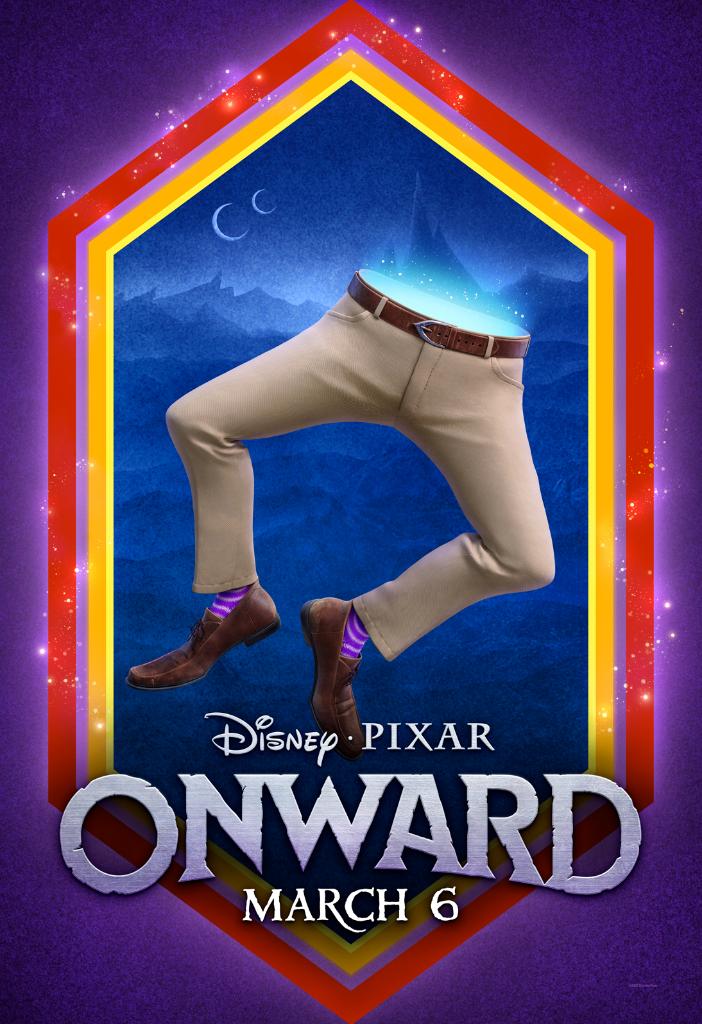“If something has happened to you, and you have real questions about it, chances are people in the world are gonna have similar questions even if they don’t have the same story.”
-Dan Scanlon
That bit of insight perfectly encapsulates Pixar’s films and according to Dan, are also why they have stood the test of time. He added that the new SparkShorts program allows filmmakers to tell stories that are unlike anything the studio has done before. Onward, his second directorial feature, is yet another Pixar first.
I was so fortunate to visit Pixar for the third time last October to learn about the making of the film and to cross paths with more passionate storytellers. One of my favorite things about this event was the filmmaker conference with Dan Scanlon and producer Kori Rae.

The Onward Long Lead press days, including a press conference with Kori Rae and Dan Scanlon, as seen on October 30, 2019 at Pixar Animation Studios in Emeryville, Calif. (Photo by Deborah Coleman / Pixar)
The two have a genuine camaraderie that makes them a winning director-producer duo, and it’s no surprise that they teamed up once again after Monsters University in 2013. One other MU alum on Onward is story supervisor Kelsey Mann. We got to see a photo of the trio on Day 1 of Onward, where there was just a single lonely post-it on a big stretch of whiteboard. As Dan recalled: “It’s just so tricky to come up with something from nothing. Kelsey and Kori and I went back on that first day and I don’t know what we did other than pin up that one thing and it’s terrifying.” His words echoed Kelsey’s about the terror of a blank page.

The Onward Long Lead press days, including Madeline Sharafian and Kelsey Mann, as seen on October 29, 2019 at Pixar Animation Studios in Emeryville, Calif. (Photo by Marc Flores / Pixar)
But of course, that page is filled eventually, and Dan is helped by a team of dedicated story artists, led by Kelsey. In a presentation with him and one of the story leads Maddie Sharafian, we learned all about the storyboarding process for Onward. After clearing the initial hurdle of the blank page, the fear began to dissipate. As Kelsey noted, he and Kori Rae were there to help Dan through the process, which Dan was quite vulnerable about:
“It’s a really scary thing and it’s a very private and lonely thing, even though you do have a lot of help, you do have to dig into yourself and your life and talk to people, talk to your friends…it’s like therapy.”
Kelsey Mann’s involvement at the start of the project is actually unusual. Most of the time, it’s just the director or the director and the producer in the early stages of the film. The three of them were joined by a handful of others to put the story up in cards and just talk through the scenes and story beats. Dan and his co-writer Jason Headley wrote a script which was then handed to the story artists. They all read it individually and then came together as a group to discuss what worked and offer critiques about what didn’t. When a scene is finished, the temporary voices are added, and it’s sent to editorial, which mixes in the sound effects and music. Now the artist’s initial pitch is strengthened by the music and atmosphere.

Screenings are held for 35-40 scenes in the studio’s theater, and there are brain trust screenings for the crew, along with people who aren’t working on the film. And what’s really cool is that people will help out on the ideas for the film even if they’re working on other projects. The collaborative spirit really does animate the studio’s artists.
But the real exciting part of this whole process are the storyboards. We actually got to see them for one scene in the film! And this was after the film screening we had viewed with all the finished animation. The boards were just as compelling. For the film crew, watching each artist’s storyboard pitch is similar to watching the actual movie. Kelsey described it as a play with multiple people presenting the scenes they worked on in succession.
It’s definitely quite a challenge to find the right story, but what I really appreciated learning about this process was how certain decisions strengthened the story and the journey of Ian and Barley. We got to see how the story artists think through those decisions, with their writing and drawings. Kelsey and Maddie actually demonstrated for us how they do this by drawing on their iPads so we could see how the storyboarded scene was edited. A tiny glimpse into one of Pixar’s story rooms!

Onward story team members, including Madeline Sharafian, Louise Smythe and Rosana Sullivan, work in the “fishbowl,” a common work space for everyone to be together while working, as seen on November 8, 2016 at Pixar Animation Studios in Emeryville, Calif. (Photo by Deborah Coleman / Pixar)

Onward story team members work in the “fishbowl,” a common work space for everyone to be together while working, as seen on November 8, 2016 at Pixar Animation Studios in Emeryville, Calif. (Photo by Deborah Coleman / Pixar)
Dan also praised Onward’s story artists for their ability to understand Ian, who was a tough character to figure out. Because he’s so much more comfortable in the background, it was difficult for the team to find something ‘playable’ that they could all work on. He mentioned how a story artist was able to turn Art from Monsters University into a character everyone was familiar with, all thanks to the iconic line, “I can’t go back to jail!” For Ian, “It wasn’t until we got to the more blundering awkward stuff that Tom Holland does so well, that we said ‘he’s all of our horrible 16 year old selves’; all of us artists who want to hide and not be seen; he’s every awkward moment you’ve ever had embodied in a character and then he’s also the opposite of Barley. Barley is super confident and wild, he’s everything we wish we were in some way.”
Speaking of Barley, we even got to draw him with some help from Maddie!

The Onward Long Lead press days, including Madeline Sharafian and Kelsey Mann, as seen on October 30, 2019 at Pixar Animation Studios in Emeryville, Calif. (Photo by Deborah Coleman / Pixar)
Now you may be wondering how certain story elements are kept or discarded. Although Dan and Kori joked that he ultimately had the final say, his answer reflected a lot of thoughtfulness and humility.
“…what makes it really hard is that everyone here is very smart and are all great filmmakers and I respect their opinion and that makes it difficult to make a choice because it’s not like I go, ‘hmph, that person’s wrong!’ I usually think ‘Wow, why are they saying that? There’s gotta be a good reason for that.’”
“It’s amazing how open Dan is and everyone is during the process because we really just want to make the best choices for the film. There are times we will debate things and we’ll leave a review. Afterwards people will go up and … [say] I’m still not sure about this decision and we will keep talking about it. That’s all we do all day long is make choices and decisions and try to move everything forward. It’s fun, it’s great, but we really do try to listen for the best idea, the thing that’s really best for the film. Dan is incredibly open. If anybody is questioning any decision that we make, we encourage them to talk to us about it. We’ve changed our minds on stuff.” – Kori Rae

While the story underwent many revisions, the core of it remained unchanged. It was always going to be a deeply personal film for Dan, one that still allows audiences to connect with it, even if they don’t share his experiences.
Stay tuned, because more posts on this film awaiteth! Last modified: January 14, 2020



